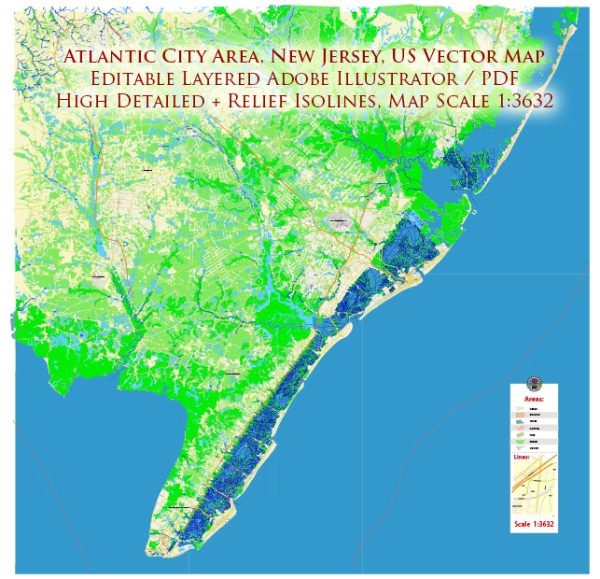The history of urban development in the Atlantic City area of New Jersey is a fascinating tale of transformation, economic growth, and cultural change. Here’s an overview of the key milestones and developments in the region’s history:
- Native American Presence: Long before European settlers arrived, the area was inhabited by the Lenni-Lenape Native American tribe. They utilized the resources provided by the Atlantic Ocean and the surrounding land.
- Early Settlement and Farming: European settlers began arriving in the late 17th century, establishing small farming communities. The region’s fertile soil and proximity to the ocean made it suitable for agriculture and fishing.
- Tourism and the Railroads: The real transformation of Atlantic City began in the mid-19th century with the advent of the railroad. In 1854, a rail line connected Atlantic City to Philadelphia, making it more accessible. This accessibility led to the growth of the city as a popular seaside resort.
- Boardwalk and Casinos: In 1870, Atlantic City opened the nation’s first boardwalk, which soon became an iconic feature of the city. In the early 20th century, the city’s status as a resort destination was solidified, attracting visitors from all over the country. Gambling and casinos became a major attraction, with legal gambling established in 1978.
- Prohibition and Organized Crime: During the Prohibition era in the 1920s and early 1930s, Atlantic City became a hotbed for organized crime, with bootlegging, speakeasies, and illegal gambling operations.
- Decline and Economic Challenges: Atlantic City faced economic difficulties in the latter half of the 20th century. The decline of the railroad industry and the rise of air travel shifted tourism patterns. The city’s reliance on the casino industry led to a boom-and-bust cycle, with periods of prosperity followed by economic downturns.
- Urban Renewal and Development Efforts: The city initiated various urban renewal projects to revitalize the area. In the late 20th century and early 21st century, efforts were made to diversify the economy and attract new businesses and industries.
- Cultural and Entertainment Hub: Despite economic challenges, Atlantic City remains a cultural and entertainment hub with a rich music scene, theaters, and events. The Miss America Pageant, which originated in Atlantic City in 1921, is an iconic event associated with the city.
- Post-Hurricane Sandy Rebuilding: Hurricane Sandy in 2012 had a significant impact on the area, resulting in widespread damage and the need for rebuilding and improvements to the city’s infrastructure.
- Continuing Development: Today, Atlantic City continues to evolve. Efforts are ongoing to diversify the economy, promote tourism, and revitalize the city’s image as a destination for both entertainment and family-friendly activities.
The history of urban development in the Atlantic City area reflects the ebb and flow of economic fortunes and cultural changes in the United States. It has experienced periods of prosperity, challenges, and renewal, and it continues to adapt and transform in response to the needs and desires of its residents and visitors.


 Author: Kirill Shrayber, Ph.D.
Author: Kirill Shrayber, Ph.D.